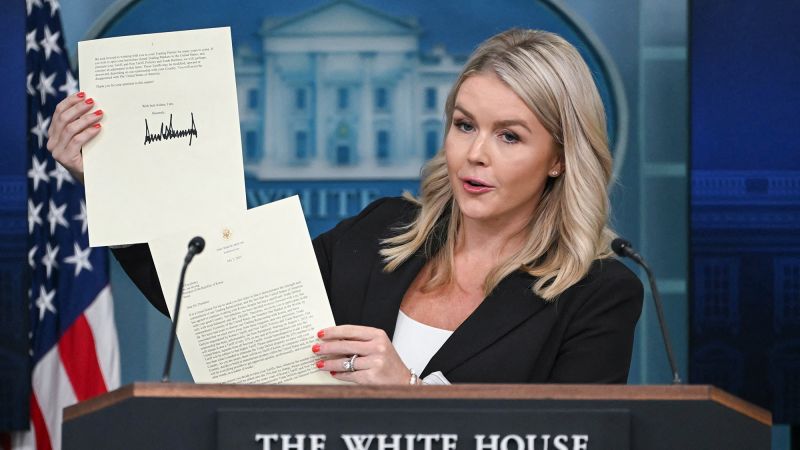Trump Administration’s Tariff Escalation and Global Trade Tensions: A 2025 Retrospective
Trump Administration’s Tariff Escalation and Global Trade Tensions: A 2025 Retrospective

In a significant move that reverberated across global markets, then-President Donald Trump initiated a wave of new tariffs, impacting a growing list of trading partners. On a pivotal Monday, Trump dispatched letters to the leaders of numerous countries, informing them of revised, often higher, tariff rates. Simultaneously, he signed an executive action pushing back the implementation date for most ‘reciprocal’ tariffs, excluding those on China, to August 1. This extension provided a brief reprieve, as these tariffs were originally slated to begin on Wednesday.
The President’s stance remained somewhat flexible, stating the August 1 deadline was ‘firm, but not 100% firm,’ leaving room for further negotiations. Japan and South Korea were among the first to receive these notices, with both facing a 25% tariff come August 1. Despite this, both nations quickly indicated their intent to engage in further discussions with the U.S., with Japan specifically aiming for a comprehensive trade deal.
The tariff announcements extended beyond these key Asian allies, with similar letters sent to Malaysia, Kazakhstan, South Africa, Myanmar, and Laos, where rates climbed as high as 40%. Later that day, an additional seven countries—Tunisia, Bosnia and Herzegovina, Indonesia, Bangladesh, Serbia, Cambodia, and Thailand—were notified, bringing the total to 14 nations receiving tariff warnings on that Monday. Trump cited significant trade deficits and policies he deemed detrimental to American exports as the primary justifications for these measures, encouraging foreign leaders to boost manufacturing within the United States to circumvent the tariffs.
This escalation occurred just before an initial July 9 deadline, which marked the end of a prior pause on ‘reciprocal’ tariffs. The letters also contained threats of even higher tariffs should affected countries retaliate. Notably, the European Union, despite past trade disagreements with the Trump administration, did not appear to receive a letter, indicating a different diplomatic approach at the time.
Global reactions were swift. Many nations welcomed the deadline extension, signaling a willingness to continue dialogue. Japan expressed ‘deep regret’ but committed to bilateral negotiations. South Korea’s finance ministry warned of ‘immediate and bold action’ if market fluctuations became excessive. Thailand, Malaysia, and South Africa also confirmed plans for ongoing diplomatic efforts, with South Africa challenging the accuracy of the trade data used to determine its 30% tariff rate.
Collectively, the 14 targeted countries accounted for $465 billion in U.S. imports the previous year, with Japan and South Korea alone making up 60% of that total. The prospect of increased tariffs raised concerns about higher prices for American consumers, particularly for goods like cars, auto parts, and semiconductors. Financial markets responded negatively, with the Dow, S&P 500, and Nasdaq Composite all closing lower, reflecting investor anxiety over the escalating trade tensions.
Disclaimer: This content is aggregated from public sources online. Please verify information independently. If you believe your rights have been infringed, contact us for removal.